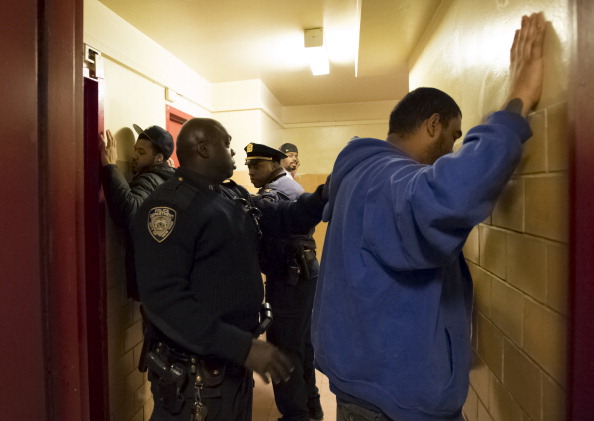Achieving justice for racial discrimination has long been fraught with obstacles. During the civil rights era, it was Southern governors and school boards who blatantly obstructed court orders to desegregate schools. In more recent years, the burdens have been erected not by Southern politicians, but by the courts themselves. The Supreme Court has made it virtually impossible to prove race discrimination short of compelling evidence that specific individuals were intentionally targeted because of their race; proof that government policies or practices—up to and including the death penalty—have widespread discriminatory effects on African-Americans is not enough. And by striking down a core part of the Voting Rights Act last term, the Supreme Court has decided that states and localities that had discriminatory voting practices in the past no longer need to have changes to their voting laws vetted to ensure they don’t continue to discriminate.
Now, a decision by the US Court of Appeals for the Second Circuit suggests that there is no limit to the obstacles courts can raise to claims of race discrimination. Not only did the Court of Appeals temporarily stay any remedies arising from a landmark lower court decision in August finding that the New York City Police Department had engaged in intentional discrimination in its “stop-and-frisk” program; it also took the extraordinary step of removing the lower court judge from the case.
The Second Circuit decision came in connection with a preliminary motion in an appeal of Floyd v. City of New York, a longstanding case challenging the New York Police Department’s “stop-and-frisk” policy. In August, US District Court Judge Shira Scheindlin issued a 198-page decision in the case, finding that that the NYPD intentionally stopped and frisked blacks and Latinos at much higher rates than whites, and had stopped and frisked thousands of city residents without the constitutionally required basis for doing so—“reasonable suspicion” that they were engaged in some criminal conduct. In 2011 alone, the NYPD stopped more than 680,000 people, 84 percent of whom were black or Latino, and only 9 percent of whom were white. They found contraband in only 2 percent of all stops. (Full disclosure: the case was litigated by the Center for Constitutional Rights, where I began my legal career three decades ago and have been a board member.)
The city appealed, and sought a stay of any remedial measures pending the outcome of the appeal. On Tuesday, the court of appeals heard argument on that motion, and on Thursday granted it. This in itself is not a wholly surprising result. Appellate courts not infrequently maintain the status quo where a lower court decision under appeal would require significant outlays from the appealing party—although they are less likely to do so where, as here, there have been extensive findings of ongoing unconstitutional conduct.
But the court of appeals then went further, entirely on its own initiative, and ordered Judge Scheindlin’s removal from the case. The city had not even requested that remedy. This is unheard of. The court criticized Judge Scheindlin for violating norms of impartiality in two ways—by deciding to take on the case as a “related case” at its outset, and by making some statements to the media while the case was ongoing. Because the city had not even raised this issue, the court ruled without affording the parties themselves an opportunity to argue whether such an extraordinary remedy is called for.
Judge Scheindlin issued a brief, dignified statement in her own defense. She explained that she took the case as a related case because plaintiffs alleged that the city had violated an order that she herself had issued in a prior case challenging the city’s stop-and-frisk practices. That is an entirely reasonable basis for identifying a case as related. The “related case” rule permits district court judges to take cases that are related to cases they have previously decided, in order to encourage efficient resolution of disputes. Judge Scheindlin was well within her authority in taking the case.
Apparently lacking irony or shame, the court of appeals panel hearing the motion in Floyd departed from the usual practice of allowing the full appeal to be assigned to a random panel and instead ordered that it would hear the full appeal itself. Nor did it offer any explanation for why it was departing from the usual course of business. Evidently when it comes to related cases, what’s sauce for the district court is not sauce for the court of appeals.
Regarding the judge’s allegedly problematic statements to the media, the judge is her own best defender. Here’s what she said in her statement after the court of appeals rebuked her:
Advertisement
All of the interviews identified by the Second Circuit were conducted under the express condition that I would not comment on the Floyd case. And I did not. Some of the reporters used quotes from written opinions in Floyd that gave the appearance that I had commented on the case. However, a careful reading of each interview will reveal that no such comments were made.
The court of appeals panel didn’t feel the need to do “a careful reading.” They didn’t even feel the need to hear from the parties themselves before deciding an issue that neither party had raised or briefed.
So here’s where we stand. A district court judge issues careful and extensive findings, based on months of trial testimony and meticulously elaborated in a 198-page decision, that the NYPD intentionally targeted black and Latino New York residents for unconstitutional stops and frisks over many years. And she is rewarded by a court of appeals that, on its own initiative, without even hearing from the parties, and apparently without bothering to distinguish between the judge’s out-of-court statements and her written opinions, has now stayed all remedies, chastised the judge, and removed her from the case. That’s what you get for mandating equal protection of the law.



